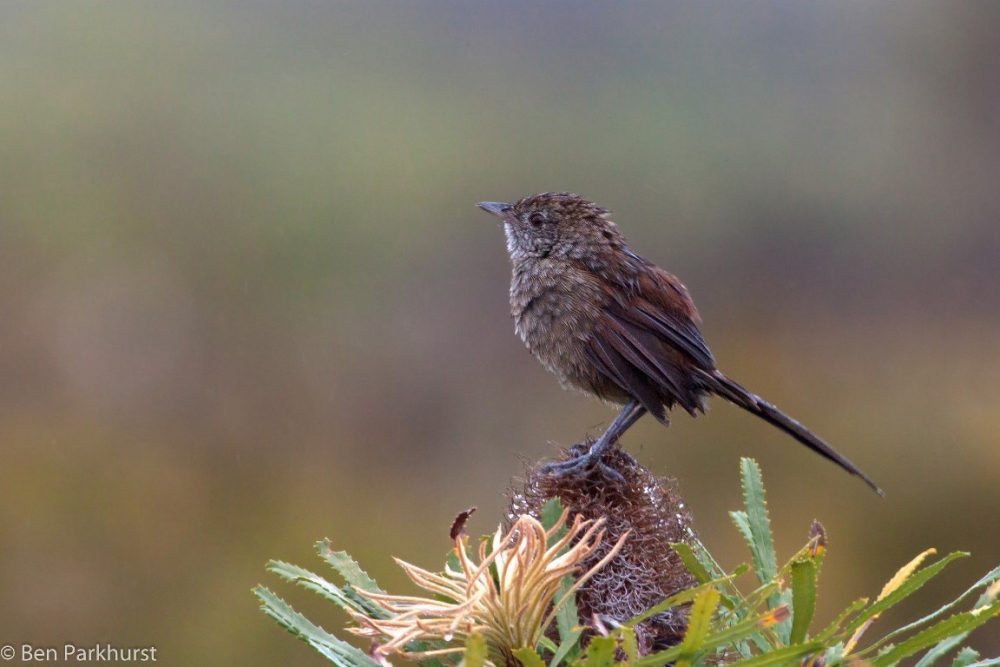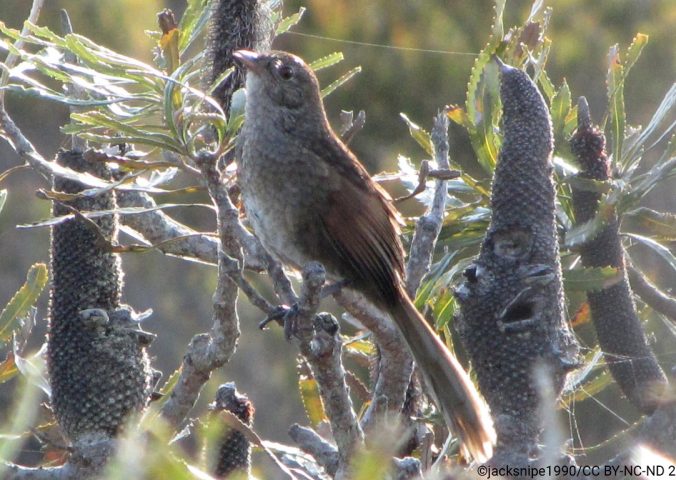About
The Western Bristlebird is one of only three species representing an entire avian family, the Dasyornithidae, which are all endemic to Australia.
This family diverged from its closest relatives 15.1 million years ago. These birds are mainly terrestrial where they spend their time in dense undergrowth where it hunts and forages for food. The former range of this species extended from Perth to Ravensthorpe along the south-west coast of Australia, but this range has shrunk massively. Wildfire is the principal threat to this species and is the main cause of its historical range contraction. Disturbance from introduced animals has led to greater habitat degradation and clearance for grazing and agriculture has also lead to habitat loss. Surveys have been completed all over the range of this species and the populations are protected from fire as much as possible. All populations now remain only in protected areas so their habitats are not being degraded as much as before. There has been a translocation programme that is trying to increase population numbers. The recovery of this species is being managed by the South Coast Threatened Birds Recovery Team.
- Order: Passeriformes
- Family: Dasyornithidae
- Population: 1000
- Trend: decreasing
- Size: 17-20cm
EDGE Score
Distribution
The species is only found in around the Fitzgerald River National Park and in nature reserves east of Albany, Australia.
Habitat and Ecology
This species is ground dwelling and favours heathland with low and dense vegetation. It can be found in areas with spare Eucalyptus plants. Swamps can be sanctuaries for bristlebirds following the destruction of heath by wildfires. Breeding is believed to occur between July and October, with a clutch size of two. The species feeds on invertebrates such as earthworms, snails, ants, beetles and also seeds.

